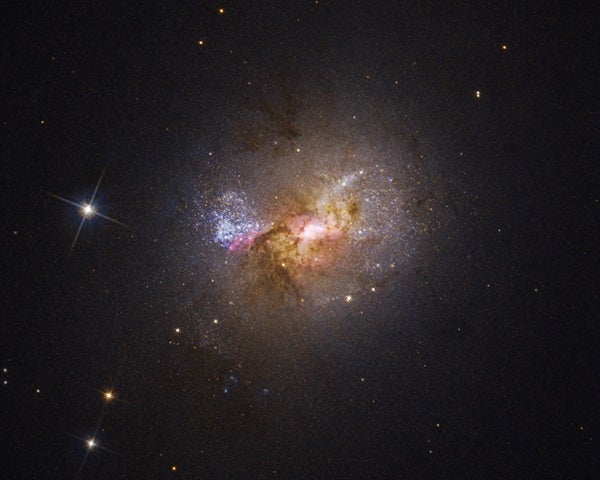As it turns out, black holes aren’t always monsters.
Normally, the giant black holes lurking at the center of galaxies are known for quenching star formation – cutting off their host’s ability to birth new stars. But the black hole at the heart of dwarf galaxy Henize 2-10 is doing the opposite: It’s feeding gas into a nearby stellar nursery, according to new research published in Nature January 19.
“From the beginning I knew something unusual and special was happening in Henize 2-10, said Amy Reines, principal investigator on the new investigation made using the Hubble Space Telescope, in a press release. And now Hubble has provided a very clear picture of the connection between the black hole and a neighboring star forming region located 230 light-years from the black hole.
The black hole in Henize 2-10 is blowing new gas – which is moving at about 1 million mph (1.6 million km/h) –– into the region, triggering the birth of new stars. How this is occurring is still uncertain, as normally outflows of gas from massive black holes heat up the surrounding gas clouds so much that they are unable to cool down enough to form stars.
Even before this discovery, Henize 2-10 was on scientist’s radar. For years, researchers have sought to understand how supermassive black holes sitting at the heart of massive galaxies like the Milky Way managed to grow to such immense sizes. With a mere one-tenth the number of stars as the Milky Way, Henize 2-10 set off a debate a decade ago amongst astronomers as to whether smaller dwarf galaxies host less massive central black holes proportional to their size.










